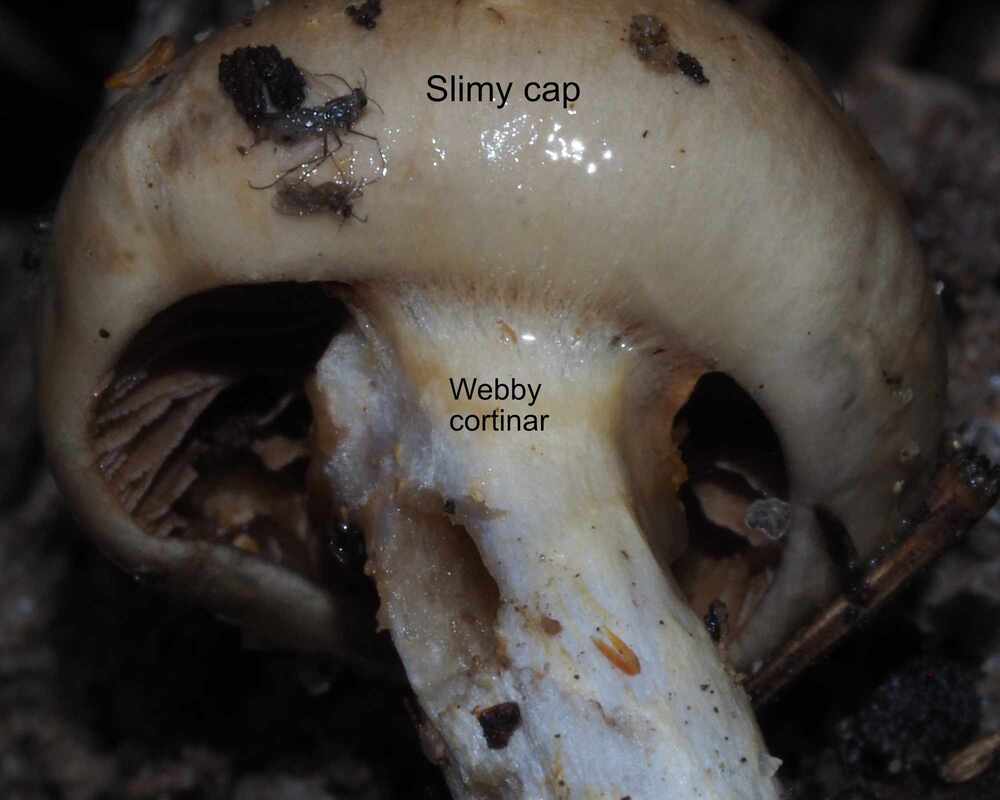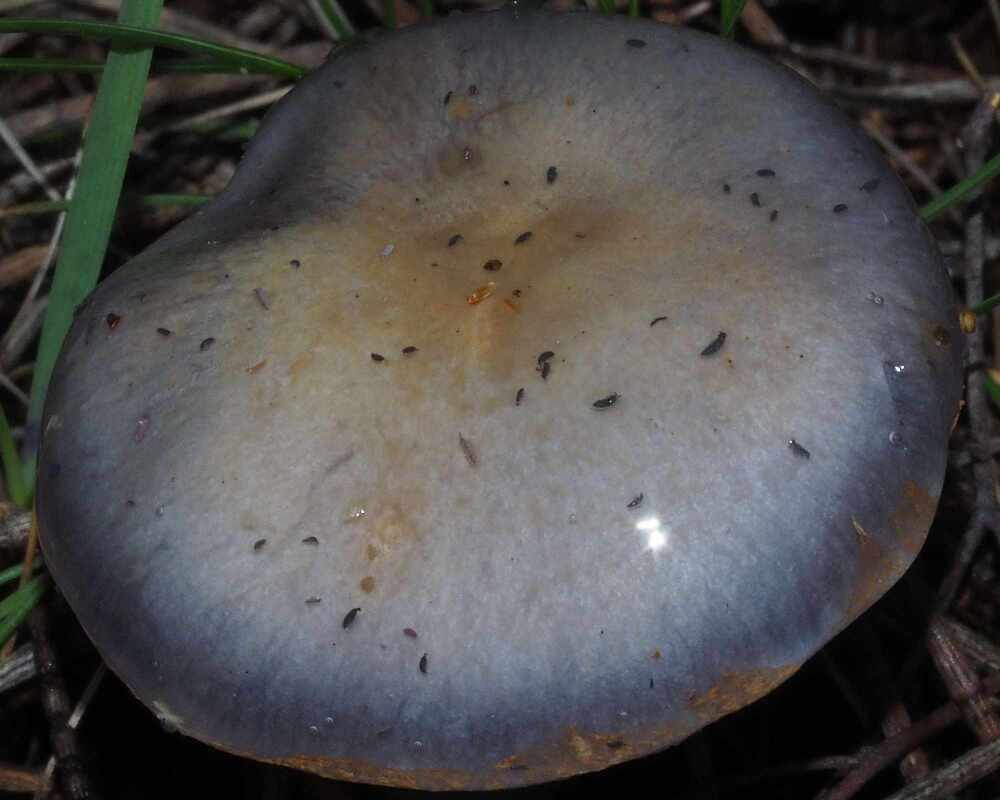 fully emerged Cortinarius erythraeus
fully emerged Cortinarius erythraeus A recent highlight of my life was the discovery of beautiful red-capped Cortinarius erythraeus for the first time in Foxes Lair.
I recall a time when sex was the pinnacle; My oh my, how things change!
Cortinarius is the largest genus of mushrooms in the world, and there are some colourful specimens in Foxes Lair.
 Cortinarius erythraeus spore print
Cortinarius erythraeus spore print
1. All Cortinarius have rusty brown to brown spores. Don't be fooled by gill colour, which often darkens with age.
2. The name Cortinarius refers to a cortina (meaning curtain) of slimy webby tissue that covers the developing gills from the cap to the stem (a partial veil). As the toadstool expands this dries and collapses on to the stem to form a webby ring zone that is often stained with spores and may disappear entirely.

4 The caps also fade as they expand and become dry (hygrophanous).
Cortinarius rotundisporus (elegant blue webcap) below and on the left shows this well. The sticky cap often traps tiny arthropods that crawl around eating organic matter and fungal spores.
5. Cortinarius are mycorrhizal fungi that emerge around their host trees. Cortinarius archerii occurs every winter near peg 144. Cortinarius multisporus is common around moist rocky soil under rock sheoaks, and Cortinarius erythraeus popped up in yellow sand near Eucalyptus aspersa mallees this year.
the large Cortinarius australiensus (skirt webcap) has an unusual stem ring, like a sock fitted over the lower stem. This is called a volva and is the residue from a universal veil that covers the entire toadstool before the cap expands.
Small Cortinarius austrovenetus is rare, and will be another highlight when I find it.











